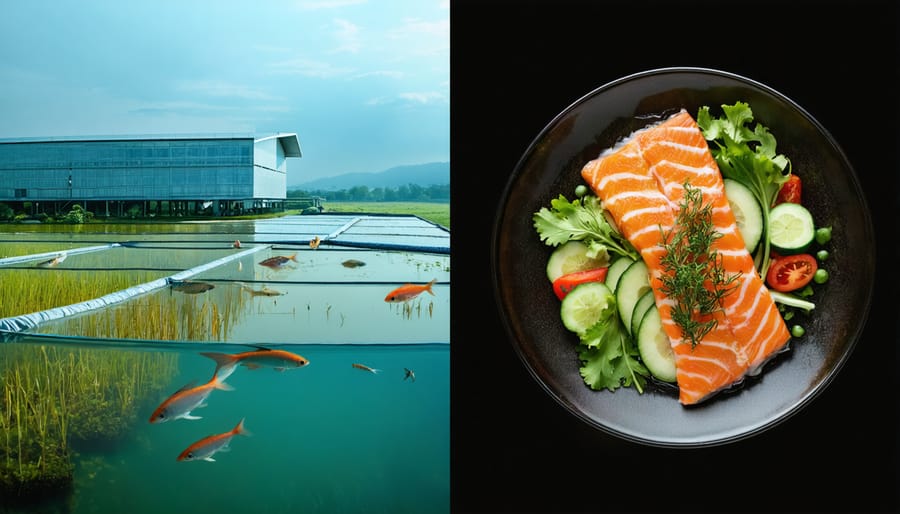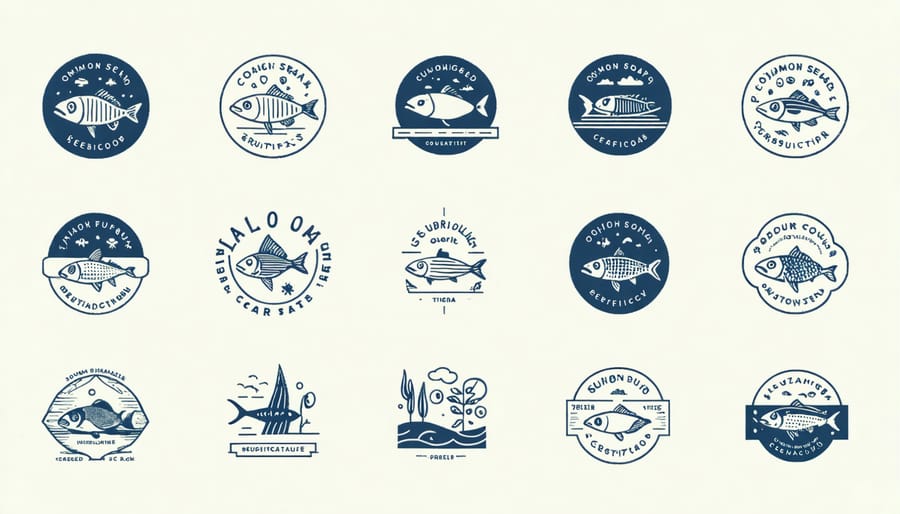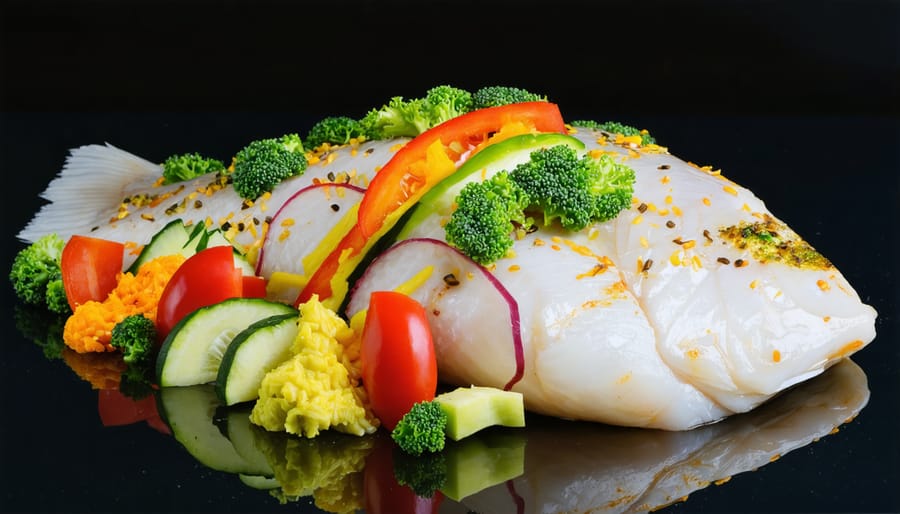
Sustainable tilapia represents a breakthrough in responsible seafood consumption, offering an environmentally conscious choice for mindful home cooks. As one of the most efficiently farmed fish species, tilapia requires minimal resources while providing high-quality protein for a growing global population. When raised in well-managed aquaculture systems, these versatile fish convert plant-based feed into protein more effectively than most other farmed species, using less water and producing fewer environmental impacts than many conventional protein sources.
Unlike wild-caught options that may face overfishing concerns, sustainably farmed tilapia offers a consistent, year-round supply while protecting natural fish populations. Modern aquaculture practices have evolved to address previous environmental concerns, with leading producers now implementing closed-system farming, water recycling, and strict quality controls. These innovations ensure that today’s sustainable tilapia not only delivers on environmental promises but also provides clean, healthy fish that’s free from antibiotics and harmful chemicals.
For conscious consumers seeking both ecological responsibility and culinary versatility, sustainable tilapia emerges as a smart, future-forward choice for weekly meal planning.
What Makes Tilapia a Sustainable Superstar?
The Eco-Friendly Feed Factor
Here’s something I love about tilapia: they’re basically the plant-based eaters of the fish world! Unlike salmon or tuna that need a lot of wild-caught fish in their diet, tilapia are happy munching on algae and plant-based feed. This makes them incredibly efficient to raise and much gentler on our ocean’s resources.
Think of it this way – to produce one pound of salmon, farmers might need to use several pounds of wild-caught fish as feed. But tilapia? They can thrive on a diet that’s primarily made up of sustainable plant ingredients like soy, corn, and wheat. Some innovative farms are even using duckweed and other aquatic plants to feed their tilapia, creating an even more eco-friendly cycle.
What really excites me is how this plant-based diet translates into a smaller environmental footprint. When we choose tilapia, we’re essentially selecting a fish that requires fewer natural resources to produce, making it a smart choice for environmentally conscious eating. It’s like choosing a more sustainable protein option without compromising on quality or taste!

Farm-to-Table Benefits
When it comes to sustainable tilapia farming, the journey from pond to plate is truly remarkable. I’ve witnessed firsthand how responsible farming practices not only produce healthier fish but also protect our environment. Modern tilapia farms are embracing eco-friendly cooking practices and innovative techniques that minimize water usage and reduce environmental impact.
These farms use recirculating aquaculture systems that filter and reuse water, dramatically reducing the strain on local water resources. What I love most is how they create a beautiful symbiotic relationship – tilapia waste fertilizes plants, while plants naturally filter the water. It’s nature’s perfect cycle!
The benefits extend beyond environmental impact. Farm-to-table tilapia offers superior freshness and flavor, and you can actually taste the difference. Plus, knowing exactly where your fish comes from creates a meaningful connection to your food. Many local farmers even welcome visitors, allowing families to learn about sustainable practices firsthand.
By choosing sustainably farmed tilapia, we’re not just making a healthier choice for our families – we’re supporting a system that protects our planet for future generations.
Choosing the Best Sustainable Tilapia
Certification Labels to Look For
When shopping for sustainable tilapia, I’ve learned that certification labels are your best friends in making eco-conscious choices. The Aquaculture Stewardship Council (ASC) certification is one of the most trusted marks to look for – it ensures your tilapia comes from farms that maintain high environmental standards and responsible farming practices.
Another reliable certification is the Best Aquaculture Practices (BAP) label, which evaluates everything from environmental responsibility to food safety. I particularly love that BAP uses a star system – the more stars, the more steps in the production chain that have been certified.
Keep an eye out for the Global Aquaculture Alliance (GAA) certification too. These certified farms must meet strict standards for water quality, fish welfare, and social responsibility. You might also spot the Friend of the Sea label, which guarantees your tilapia comes from farms that protect marine habitats and maintain sustainable fish populations.
Remember, while these labels might make the fish slightly pricier, they’re worth the investment for both our health and our planet’s future.

Where to Source Your Fish
Finding sustainable tilapia doesn’t have to be a treasure hunt! I’ve discovered that many local fish markets and well-known grocery chains now carry certified sustainable options. Look for labels from the Aquaculture Stewardship Council (ASC) or Best Aquaculture Practices (BAP) – these are your golden tickets to ensuring your tilapia is responsibly sourced.
My personal go-to is forming a relationship with local seafood vendors who can tell you exactly where their fish comes from. Many farmers’ markets now feature sustainable fish vendors, and I’ve found some amazing deals this way! For convenience, major retailers like Whole Foods and Costco have committed to sourcing sustainable seafood, making it easier to grab quality tilapia during your regular shopping trips.
Don’t forget to check out online seafood delivery services – many now specialize in sustainable options and deliver straight to your door. I love that these services often provide detailed information about their farming practices and sources. Remember to ask questions about farming methods and origin – responsible suppliers will be happy to share this information with you!
Kitchen Magic with Sustainable Tilapia
Perfect Cooking Methods
When it comes to preparing sustainable tilapia, mastering a few key healthy cooking techniques can make all the difference in creating delicious, nutritious meals. My personal favorite is the simple pan-searing method – just heat a touch of olive oil in a skillet, add your seasoned tilapia fillet, and cook for about 4 minutes on each side until it flakes easily with a fork.
For those watching their calories, baking is a wonderful option. Wrap your tilapia in parchment paper with lemon slices, herbs, and a drizzle of olive oil. Pop it in the oven at 375°F for 12-15 minutes for perfectly moist results. I love this method because it lets the fish’s natural flavors shine while keeping it tender.
Grilling adds a lovely smoky flavor that complements tilapia’s mild taste. Place the fish on a well-oiled grill for 3-4 minutes per side, or use a grill basket to prevent sticking. For extra protection, you can wrap it in foil with your favorite seasonings.
Steam-cooking is another excellent choice that preserves both nutrients and moisture. Simply place your seasoned tilapia in a steamer basket over simmering water for 8-10 minutes. This gentle cooking method is perfect for maintaining the fish’s delicate texture while keeping it healthy and light.
Remember to avoid overcooking – tilapia is done when it turns opaque and flakes easily with gentle pressure.
Flavor Pairings That Shine
Looking to elevate your sustainable tilapia dish? Let me share some of my favorite flavor combinations that have never failed to impress at my dinner table. The mild, slightly sweet nature of tilapia makes it incredibly versatile and ready to take on whatever flavors you’re craving.
For a bright, Mediterranean-inspired dish, pair your tilapia with lemon, garlic, and fresh herbs like oregano and thyme. Cherry tomatoes and capers add a delightful pop of flavor that perfectly complements the fish’s delicate taste. When I’m in the mood for something tropical, I love combining mango salsa with a hint of lime and cilantro – it’s like a vacation on a plate!
Asian-inspired flavors work beautifully too. Try ginger, soy sauce, and a touch of sesame oil, topped with green onions and sesame seeds. For a comforting meal, create a herb-butter sauce with parsley, dill, and chives. My personal go-to weeknight combination includes olive oil, paprika, and fresh basil, served with sautéed vegetables.
Don’t forget about texture – adding crushed nuts like almonds or pistachios creates a wonderful crunch that contrasts nicely with the tender fish. For side dishes, quinoa, roasted vegetables, or a fresh cucumber salad make perfect companions to your sustainably sourced tilapia.

Quick and Easy Recipe Ideas
Looking for delicious ways to prepare your sustainable tilapia? I’ve got you covered with these family-friendly recipes that take 30 minutes or less to prepare!
My personal favorite is the Lemon Herb Tilapia – simply season your fillets with salt, pepper, and dried herbs, then pan-sear for 4 minutes per side. Finish with a squeeze of fresh lemon juice for a bright, clean flavor that lets the fish shine.
For a crowd-pleasing option, try Crispy Tilapia Tacos. Coat your fish in seasoned breadcrumbs, bake until golden (about 15 minutes), then serve in warm tortillas with creamy slaw and diced avocado. My kids absolutely love these on busy weeknights!
Need something even simpler? Sheet Pan Tilapia and Vegetables is your answer. Place seasoned tilapia fillets on a baking sheet with your favorite veggies (I love cherry tomatoes and asparagus), drizzle with olive oil, and bake at 400°F for 12-15 minutes.
For an Asian-inspired dish, try Ginger-Soy Tilapia. Marinate fillets in a mixture of soy sauce, grated ginger, and a touch of honey for 10 minutes, then pan-fry until cooked through. Serve over steamed rice with stir-fried vegetables for a complete meal.
Remember, sustainable tilapia cooks quickly and takes on flavors beautifully, making it perfect for these quick and easy recipes!
As we wrap up our journey into sustainable tilapia, it’s clear that our seafood choices have a real impact on both our health and our planet. By choosing sustainably farmed tilapia, we’re not just serving up a delicious meal – we’re also supporting responsible farming practices that protect our oceans for future generations.
I’ve personally made the switch to sustainable tilapia in my kitchen, and I love knowing that my family’s favorite fish tacos are making a positive difference. It’s amazing how one small change in our shopping habits can contribute to a healthier planet!
Whether you’re new to cooking fish or a seasoned chef, sustainable tilapia offers endless possibilities in the kitchen. From simple pan-seared fillets to exotic Asian-inspired dishes, this versatile fish makes it easy to eat sustainably without sacrificing flavor or breaking the bank.
Next time you’re at the grocery store, look for certified sustainable tilapia – your taste buds and our oceans will thank you. Together, we can make conscious food choices that create positive change, one delicious meal at a time.



